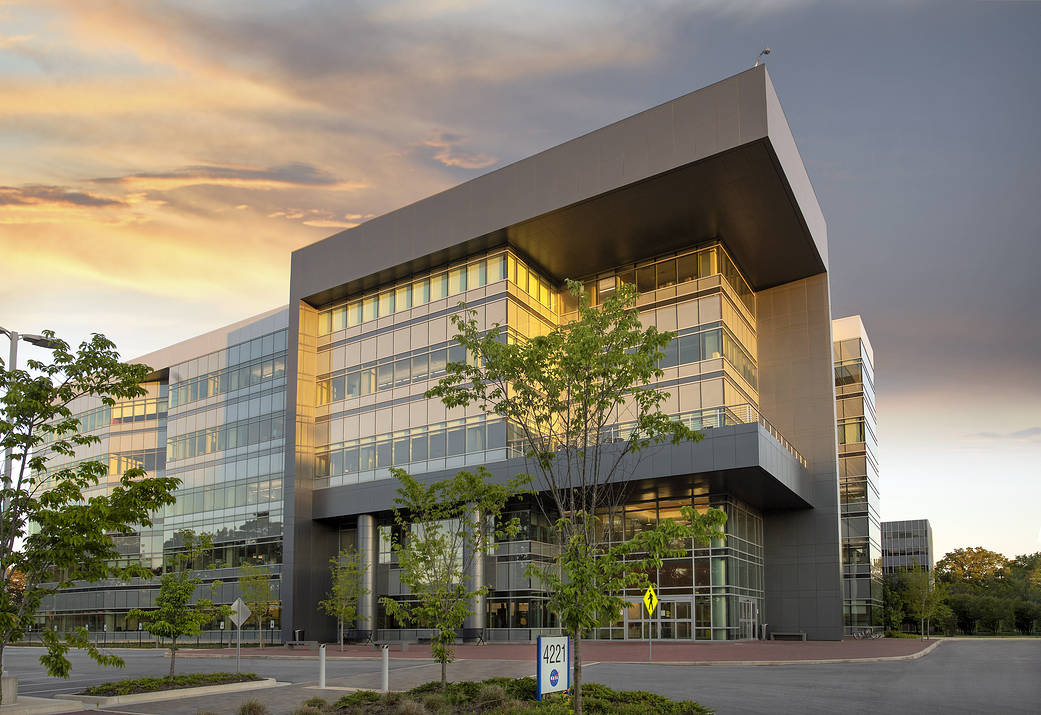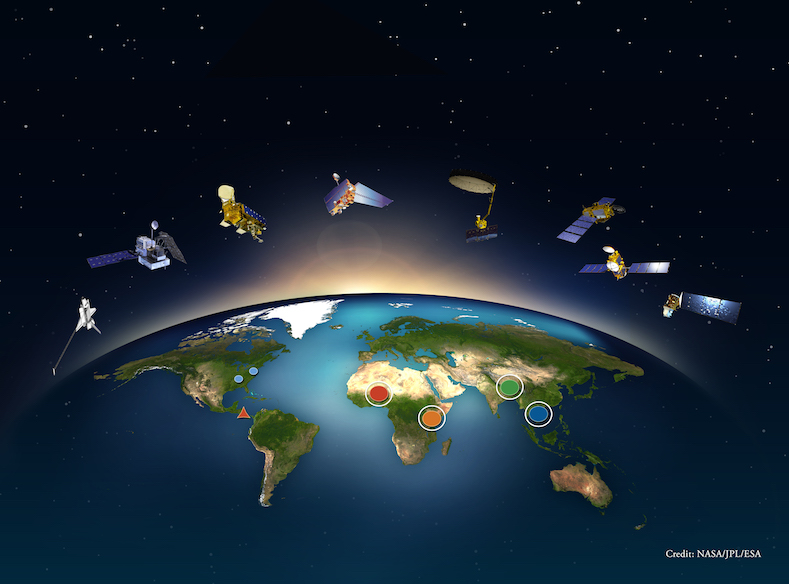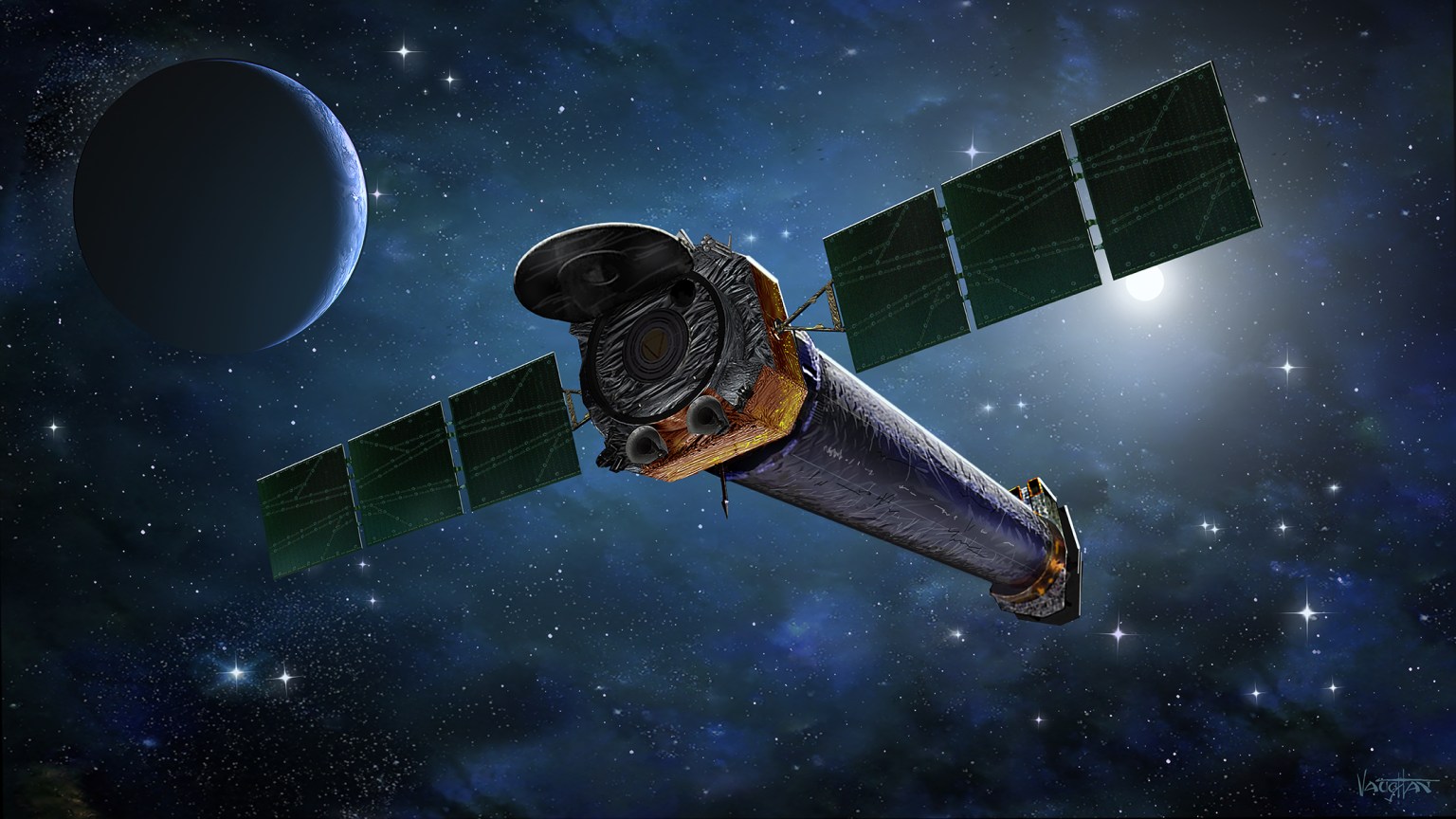Marshall Space Flight Center
Science Conferences and Collaborations 2024
Earth Science
NASA’s SERVIR Science Coordination Office Hosts Delegation from Belize for Earth Observation Exchange and Hackathons
From Aug. 5-9 the SERVIR Science Coordination Office (SCO) at NASA Marshall Space Flight Center hosted a delegation of environmental scientists from Belize for an exchange focused on the use of cloud computing in Earth observation. The delegation consisted of five representatives hailing from the Forest Department of the Ministry of Sustainable Development and Climate Change, the Land Information Centre (LIC) of the Ministry of Natural Resources, and the Environmental Research Institute of the University of Belize (UB-ERI).
Executed via ‘hackathon’ type sessions, the exchange focused on the use of the Google Earth Engine platform for mapping Belize’s land cover using open data from sources such as Landsat, MODIS, Planet / NICFI, and Sentinel-2. Those hackathons resulted in the development of a draft land cover map of Belize for 2023, coinciding with the final year of surveys collected by Belizean institutions during a mapathon activity last year in which almost 22,000 one-hectare sites were mapped using Collect Earth Online, a platform co-developed by SERVIR. In terms of next steps, Belize’s National Climate Change Office will be supporting follow-up workshops in Belize, focused on editing and validating the 2023 draft land cover map, which is planned to be integrated into the update to Belize’s Forest Reference Level report to the United Nations Framework Convention on Climate Change.
NASA SERVIR Science Coordination Office Team Members Support Training, Field Testing for SERVIR West Africa Project
The SERVIR Science Coordination Office (SCO) team and colleagues from the World Resources Institute (WRI) supported the kickoff training and initial field testing for Centre for Remote Sensing and Geospatial Information Services’ (CERSGIS’) cocoa data collection project in West Africa, which is funded by the Lacuna Fund and WRI. The trainees included CERSGIS staff and students from various universities in Ghana involved in YouthMappers, a U.S. Agency for International Development (USAID)-funded program that uses public geospatial technology to address development and environmental challenges. The project aims to improve understanding of the relationship between people and forests and the potential impacts of future sustainable sourcing policies on local livelihoods. To do so, the project team will extensively map cocoa farms to improve the publicly available reference data for classification algorithms. Additionally, the team will conduct comprehensive socioeconomic data collection in rural cocoa farming communities to integrate into Earth observation work and inform decision making that is responsive to the local context.
NASA’s Disaster Response Coordination System Formally Launches

The NASA Disasters Response Coordination System (DRCS) officially launched on June 13, 2024, during a ceremony at NASA Headquarters with Administrator Bill Nelson as the keynote speaker. The DRCS is a revamped, one-NASA approach in how the agency responds to natural hazards and disasters domestically and internationally to support partners and stakeholders. The DRCS will be organized by the Program Office located at NASA’s Langley Research Center (LaRC.) NASA Marshall and Earth Science Branch Disasters team will use subject matter experts to continue supporting the DRCS and events that are responded to by NASA.
Center Response Coordinators Jordan Bell, Ronan Lucey, and Earth Action Associate Disasters Program Manager Lori Schultz represented Marshall at the DRCS launch. Read more about the DRCS launch.
Data Science
NASA Marshall Scientists Highlight Artificial Intelligence Initiatives on Capitol Hill
Dr. Manil Maskey represented NASA’s Interagency Implementation and Advanced Concepts Team (IMPACT) during a discussion about the National Artificial Intelligence Research Resource (NAIRR) Pilot program held on Capitol Hill. The event brought together key members of the House Artificial Intelligence (AI) Caucus, including U.S. Reps. Anna Eshoo, Bill Foster, Haley Stevens, Jim Baird, and Sean Casten. In attendance were several congressional staffers and the director of the National Science Foundation. During the discussion, Maskey highlighted the AI initiatives of NASA’s Science Mission Directorate (SMD) and emphasized the potential benefits of the NAIRR to NASA’s activities. He also showcased the advancements in SMD’s AI foundation model developments. The event served as a platform for sharing insights and fostering collaboration between NASA, other agencies, and key legislative stakeholders on the future of AI research and its applications.

































